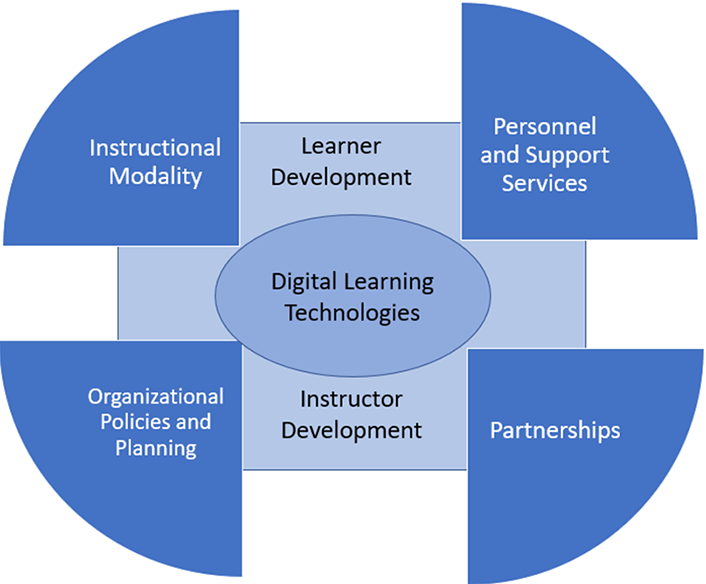I would like to comment and reflect on the impact of the COVID-19 pandemic on digital transformation in higher education. For the past 15 years I have been hearing about the digitalization at Malmö University without ever really reflecting what it actually means and how we are implementing that into our way of teaching. Of course that digitalization has been with us for years but the digital transformation really emerged 2020, when we suddenly had to implement the digital technology into the teaching.
What does digital transformation really mean?
Florence Martin and Kui Xie, who are the experts in learning design, instruction and educational technology define digital transformation as
“leveraging digital technologies to enable major educational improvements, enhance learner and instructor experiences, and create new instructional models through policies, planning, partnerships, and support”.
Digital transformation is based on digital technologies and teachers need to be updated in order to be efficient, stay competitive and prepare learners for the digital workplace. Learning technologies and digital platforms are nowadays crucial for teaching and learning but how do we implement these to enhance digital teaching and learning?
A framework for digital learning in higher education proposed by Florence Martin and Kui Xie include seven areas: digital learning technologies, learner development, instructor development, instructional modality, personnel and support services, organizational policies and planning, and partnerships.

Figure 1. Digital Transformation for Digital Learning in Higher Education (Florence M and Kui X).
Digital learning technologies are used to to engage learners while instructors are supposed to use these technologies in order to build an engaging digital teaching and learning solutions. Digital teaching and learning technologies are:
- Learning management systems (LMS)
- Synchronous technologies
- Multimedia applications
- Collaborative applications
- Cloud-based technologies
- Emerging technologies
A university can offer education through different Instructional modalities which include:
- On campus technology-enhenced
- Hybrid/blended
- Asynchronous online
- Synchronous online
- Bichronous online
- HyFlex
The pandemic induced Instructor development in ,terms of improvement of teachers`s pedagogical and technological skills and their knowledge about accessibility, intellectaul property rights and copyright.
Learner development means that digital learning prepares students for future jobs through: computers and internet access, time management and self-regulation, instructional content and people, help as in help desk or an instructor, and community building.
Partnerships in terms of collaboration with other universities, professional organizations and industries strengthen digital teaching and learning.
Personnel and support services are required for successful digital transformation.
Organizational policies and planning are required for digital teaching and learning.
I find digital transformation very interesting and fun and necessary for the future but at same time also a bit problematic because it involves so many areas that must fit into this network. Reading this article has made me reflect on the digital teaching and learning technologies that I have encountered with.
Florence M. and Kui X., Digital Transformation in Higher Edducation: 7 Areas for Enhancing Digital Learning., September 27, 2022: https://er.educause.edu/articles/2022/9/digital-transformation-in-higher-education-7-areas-for-enhancing-digital-learning



